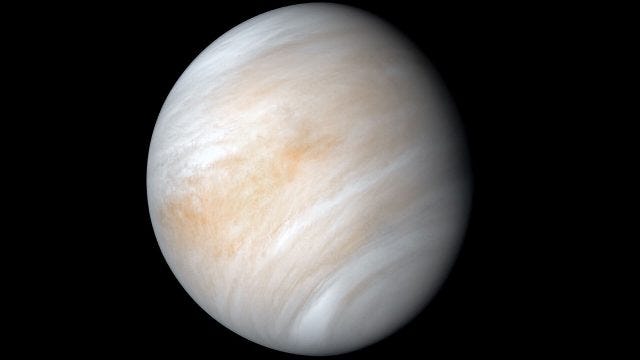Detecting Radio Emissions in Venus’s Atmosphere with Parker Probe
Written on
Chapter 1: Overview of the Parker Solar Probe
The Parker Solar Probe was launched several years ago with the primary goal of exploring the sun. In addition to its solar research, the probe has also conducted close encounters with inner planets. A recent study highlights that Parker came so near to Venus that it detected a natural radar signal, confirming its passage through the upper atmosphere of the planet. This marks the first direct atmospheric measurement of Venus in decades, revealing a landscape that differs greatly from previous observations.
During its gravity-assist maneuver in July 2020, the Parker Solar Probe soared just 517 miles (833 km) above the surface of Venus. For a brief seven minutes during this flyby, the probe’s FIELDS instrument captured a natural low-frequency signal. Glyn Collison from NASA’s Goddard Space Flight Center recognized the significance of this finding, drawing parallels to his earlier work with the Galileo orbiter, which detected a similar radio signal when passing by Jupiter’s moons.
Section 1.1: Similarities Between Venus and Earth
Venus and Earth share a striking resemblance in terms of size and composition; however, their environments are drastically different. Earth thrives as a vibrant blue planet, while Venus is characterized by its harsh conditions, including extreme atmospheric pressure and sulfuric acid clouds. Despite these differences, both planets possess an ionosphere at the edge of space, where charged particles naturally emit radio waves—an emission that Parker successfully detected.
Subsection 1.1.1: Measuring Venus’s Atmospheric Density

This new information enabled researchers to ascertain the density of Venus’ atmosphere, a feat that requires direct measurements. The last time scientists obtained such data was in 1992 when the Pioneer Venus Orbiter visited the planet. Following that, Earth-based observations suggested that Venus's upper atmosphere experienced considerable alterations during solar minimum periods, a phase that had just begun before Parker’s flyby. The probe confirmed that the planet's ionosphere significantly thins when solar activity decreases.
Section 1.2: Understanding Venus’s Transformation
Much of NASA's investigation concerning Venus has centered around understanding its stark differences from Earth today. Researchers theorize that Venus was once much more similar to Earth. Data like the atmospheric readings from Parker could shed light on how Venus transformed into its current inhospitable state. The Parker Solar Probe is set to execute four additional flybys of Venus to further reduce its distance from the sun on its next journey. This may yield even more valuable data from this solar explorer.
Chapter 2: Future Insights from Parker Solar Probe
Now read: NASA Probe Returns Amazing Image of Venus | Scientists May Have Found Evidence of Life in the Clouds of Venus | Phosphine Detected in Venus’s Atmosphere May Have Just Been Sulfur